Maritime Terrorism
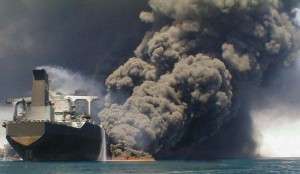
Following the reported rare suicide attack against a Saudi warship east of Hodeidah Port in the Red Sea, Intelligence Fusion looks at Maritime Terrorism and its potential impact on the global economy.
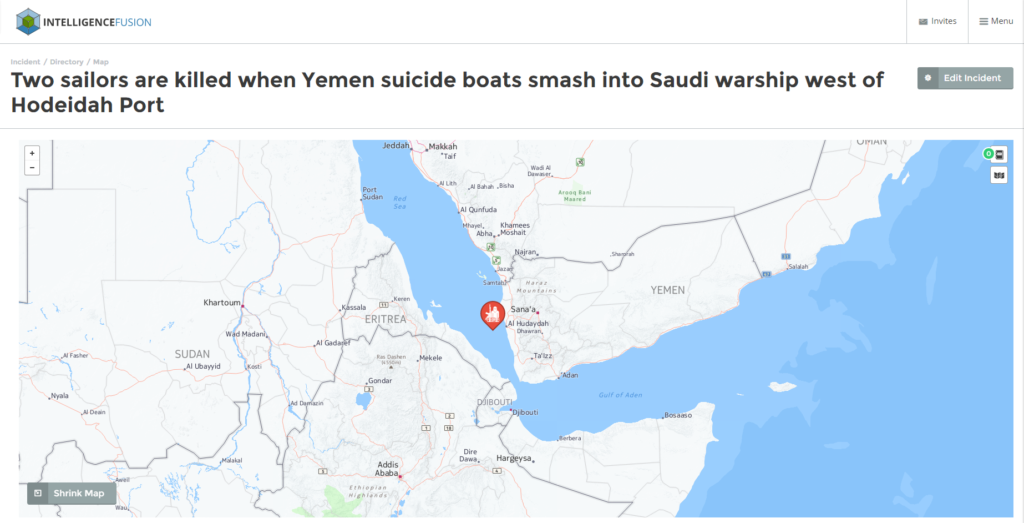
The Council for Security Cooperation in the Asia-Pacific (CSCAP) defined maritime terrorism as âthe undertaking of terrorist acts and activities (1) within the marine environment, (2) using or against vessels or fixed platforms at sea or in port, or against any one of their passengers or personnel, (3) against coastal facilities or settlements, including tourist resorts, port areas, and port town or cities.â (Quentin, 2003).
PIRACY AND TERRORISM
Piracy is so difficult to curtail because of poor maritime patrolling, ineffective implementation of maritime laws, overlapping regional jurisdictions as well as areas with complex waterways, which make it easy for pirates to ambush vessels and then escape. In addition to these maritime problems, land-based issues such as poverty, conflict, lack of good governance, security, corruption, and poor levels of education all add to the problem of piracy and prevent any effective long term solution. In the same vein, these issues that make piracy difficult to curtail, also ensure that maritime terrorism continues to be an ongoing threat. If you effectively tackle piracy, these same measures will also ensure that maritime terrorism is more difficult to conduct, however, terrorists just like pirates have proved themselves to be resourceful, determined and adaptable to changing situations. This means that any strategy to counter these threats must also be just as adaptable.
FINANCE
When terrorists struggle for finance to support their aims, they often turn to other methods of crime as sources of revenue. Kidnap for ransom in Kirkuk (Iraq) for example, was often carried out by Sunni Insurgent Groups as a means of financing their insurgency. In Somalia, as al-Shabaab became more desperate for funding, they increased their cooperation with pirates. âPirates are one of those potential sources of large amounts of money, so there is a natural linkage between Shabaabâs desire for funding to support their activities and money that pirates are getting from ransoms,â stated Colonel John Steed, principal military adviser to the U.N., special envoy to Somalia and head of the envoyâs counter-piracy unit.
POWER PROJECTION
The British Empire created and maintained their empire with the use of their navy. The United States maintains their âempireâ or control over the globe with their Air Force but supported with their carrier strike groups. If a terrorist group wants to prevent power projection, the targeting of ports, leading to long closures could hamper a militaryâs ability to project power. In the Cosco Asia attack, the group that targeted the vessel stated that part of their reasoning was to disrupt US Naval movement into the Mediterranean to prevent them from potentially targeting Muslims in Syria. This attack therefore in part, was to prevent Americaâs ability to project power.
MARITIME TERRORIST GROUPS
Abu Sayyaf â Also known as al-Harakat al-Islamiyya (Islamic Movement), is one of several Islamist separatist groups in the area of southern Philippines who have been engaged in a 30 year insurgency for an independent province in the country. On 27 Feb 2004, Abu Sayyaf placed a television filled with 4kg of TNT on-board Superferry 14, a 10,000 ton ferry sailing from Manila with 900 passengers and crew. Approximately 90 minutes into the journey the bomb detonated, killing 116 people.
Al Qaeda â âThe Baseâ, is global Sunni Islamist group which operates as both a multinational and stateless organisation, with the aim of creating a global Islamic caliphate. In Oct 2000, al-Qaeda militants in Yemen bombed the missile destroyer U.S.S. Cole in a suicide attack, killing 17 U.S. servicemen and damaging the vessel while it lay offshore.
Jeemah Islamiya â This group is a South-east Asian militant Islamist terrorist organisation whose aim is to set up a regional Islamic caliphate. The group operates in Thailand, Singapore, Malaysia, the Philippines and Indonesia. In 2000, following intelligence gathered in Afghanistan, a plot was stopped to attack U.S. Navy ships, sailors and the nightspots they frequent in Singapore. Authorities said three cells were involved in planning attacks: One was to target a shuttle bus service used by U.S. personnel in Singapore. Under a second plan, U.S. Navy vessels northeast of Singapore between Changi and Pulau Tekong may have been targeted for bombing. One of the terroristâs possessions included a map that showed observation posts in Singapore and Johor and a âkill zoneâ in the channel between Changi and Pulau Tekong. Authorities said he had a list of more than 200 U.S. companies in Singapore, two tampered Singapore passports, 15 forged Malaysian and Philippines immigration stamps, night-vision binoculars and papers describing how to make bombs. The third cell planned to target either foreign embassies or U.S. planes at the Paya Lebar Air Base.
Moro Islamic Liberation Front (signed peace deal in 2014) â Is a Muslim rebel group that operates in the area of southern Philippines. Their aim is to create an independent Moro State in the Philippines. Moro Islamic Liberation Front members were responsible for the 2003 Sasa Wharf bombing which left 16 dead and 57 wounded in Davao City, Philippines.
We can now add Houthi Rebels to this list, once this has been confirmed.
ATTACKS
U.S.S. Cole â On 12 Oct 2000, the U.S.S. Cole had arrived into Aden Port to refuel and while it was engaged in refuelling, which normally takes four to five hours, it was attacked by a small boat with up to 225 kg of high explosives. There is analysis which suggests that the information of the refuelling was likely leaked to the terrorist group so that they knew where and when to target the U.S.S Cole. Alternatively, if this analysis is inaccurate, with the regular arrivals of US ships to refuel in Aden (3-6 ship calls a month), it would not be difficult to conduct surveillance and then target an opportune vessel.
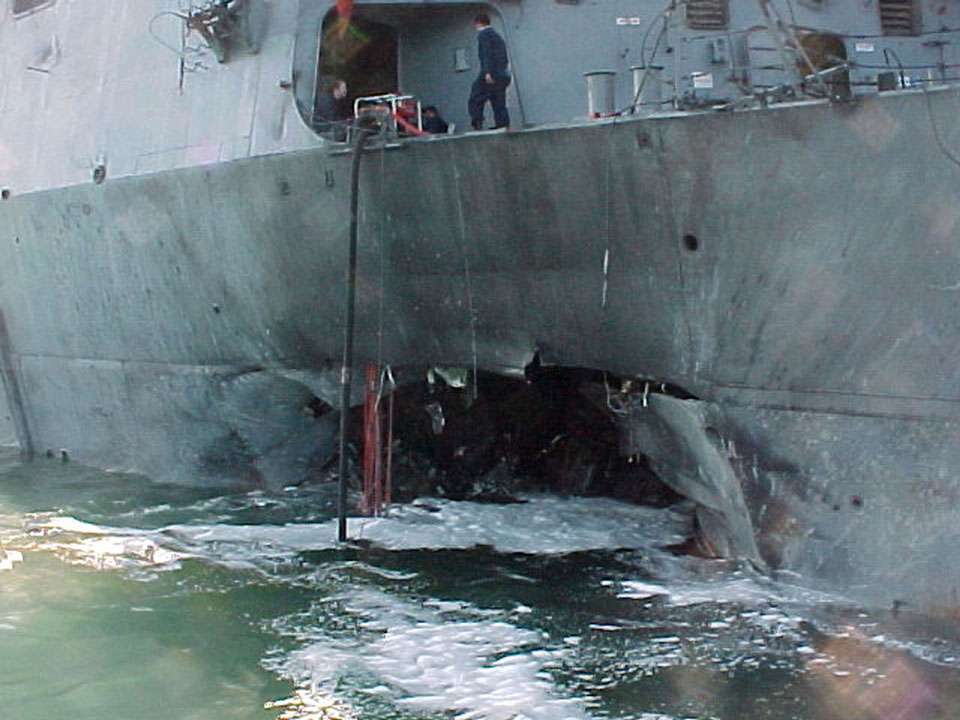
U.S.S Cole after the attack.
The ship completed the mooring operation around 0930hrs, began refuelling at 1030hrs and was targeted by the suicide boat at 1118hrs. Seventeen sailors were killed and many more injured by the explosion which ripped a 40 ft hole in the side of the ship. It is suggested in reporting and confirmed in the result that the ship may not have maintained a surface picture and a dynamic plot of all the vessels and craft in the harbour.
Note: It was following this attack that the U.S. Navy approached Blackwater, giving the company its first big defence contract.
M/V Limburg â On 06 Oct 2002, the MV Limburg, a 157,000-ton crude oil tanker was attacked off the coast of Yemen by a small boat laden with explosives, causing damage to the tanker, however it remained seaworthy. It was believed to have been carried out by al-Qaeda and was significant as it was seen as the groupâs first successful attack against an offshore oil target. Although terrorist attacks are often associated purely with the intention to kill and injure, the M/V Limburg attackâs intention was to induce economic disruption. The targeting of one vessel, even though only 90,000 barrels of crude oil were damaged, caused the price of oil to increase by $0.48 per barrel and insurance premiums introduced a loss in port revenue of $3.8 million per month. (Al Qaedaâs Maritime Threat: Akiva J. Lorenz â 2007).
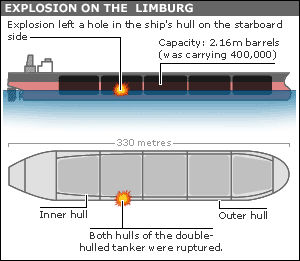
Explosion on the Limburg.
Cosco Asia â Following on from the point that some terrorist attacks are conducted in order to have an economic impact, on 31 Aug 2013, it was reported in open sources and supported by video evidence that two assailants armed with RPGs opened fire on the Cosco Asia as it was transiting the Suez Canal towards Port Said, reportedly in the area of al-Qantara. Open source reporting stated that the attack failed completely and there was no damage to the ship or the containers, however, there were two audible explosions. In a video released by the group, which had the banner of al-Furqan, an al Qaeda affiliate, you can see two men armed with RPGs and either PG-7VM or PG-7VL grenades, both of which have an effective range of 500m. The first man fires and an audible explosion can be heard, although you do not see an impact point. The second person then fires, you hear another audible explosion and see what appears to be an impact point on the port side of the ship, with a plume of smoke emanating from the strike point. The men then flee the area. Had the extremists been successful in targeting the Cosco Asia and blocking the Suez Canal, this would have had a significant effect on the Egyptian economy, which relies heavily on the revenue ($5.2 billion in 2011) and put pressure on the government.
2008 Mumbai Attacks â Although the Mumbai attack consisted of 10 terrorists from Pakistan targeting 11 sites on land over a period of three days, killing 166 people, it should be remembered that they came ashore at two locations via inflatable speedboats. They reportedly told local Marathi-speaking fishermen who asked them who they were to âmind their own businessâ before they split up and headed in two different directions.
This attack was one of the factors that encouraged India to create the Coastal Vigilance Committees (CVCs), a post-Mumbai attack measure to strengthen the nationâs coastal boundaries. The CVC consists mainly of Navy, Coast Guard and State Police who are primarily responsible for protecting the coastal boundaries, however, they are supported by about 4,000 fishermen who patrol the 580-km coastline of the state.
THREATS
âTerrorists can develop effective attack capabilities relatively quickly using a variety of platforms, including explosives-laden suicide boats and light aircraft; merchant and cruise ships as kinetic weapons to ram another vessel, warship, port facility, or offshore platform; commercial vessels as launch platforms for missile attacks; underwater swimmers to infiltrate ports; and unmanned underwater explosive delivery vehicles. Mines are also an effective weapon because they are low cost, readily available, easily deployed, difficult to counter, and require minimal training. Terrorists can also take advantage of a vesselâs legitimate cargo, such as chemicals, petroleum, or liquefied natural gas, as the explosive component of an attack. Vessels can be used to transport powerful conventional explosives or Weapons of Mass Destruction for detonation in a port or alongside an offshore facility.â (Department of Homeland Security, 2005)
Underwater Attacks on Ships
The use of divers in order to place explosive devices on ships is a significant threat due to how difficult the divers would be to detect.
As recently as Dec 2016, Mossad reportedly assassinated a Hamas drone engineer in Tunisia who was developing unmanned seacraft vehicle bombs (USVB) to blow up Israelâs offshore gas rigs. It is a frightening thought as we look at commercial aerial drones, and their advancements in such a short space of time, what attacks could be conducted with the use of USVBs in the future as the technology develops.
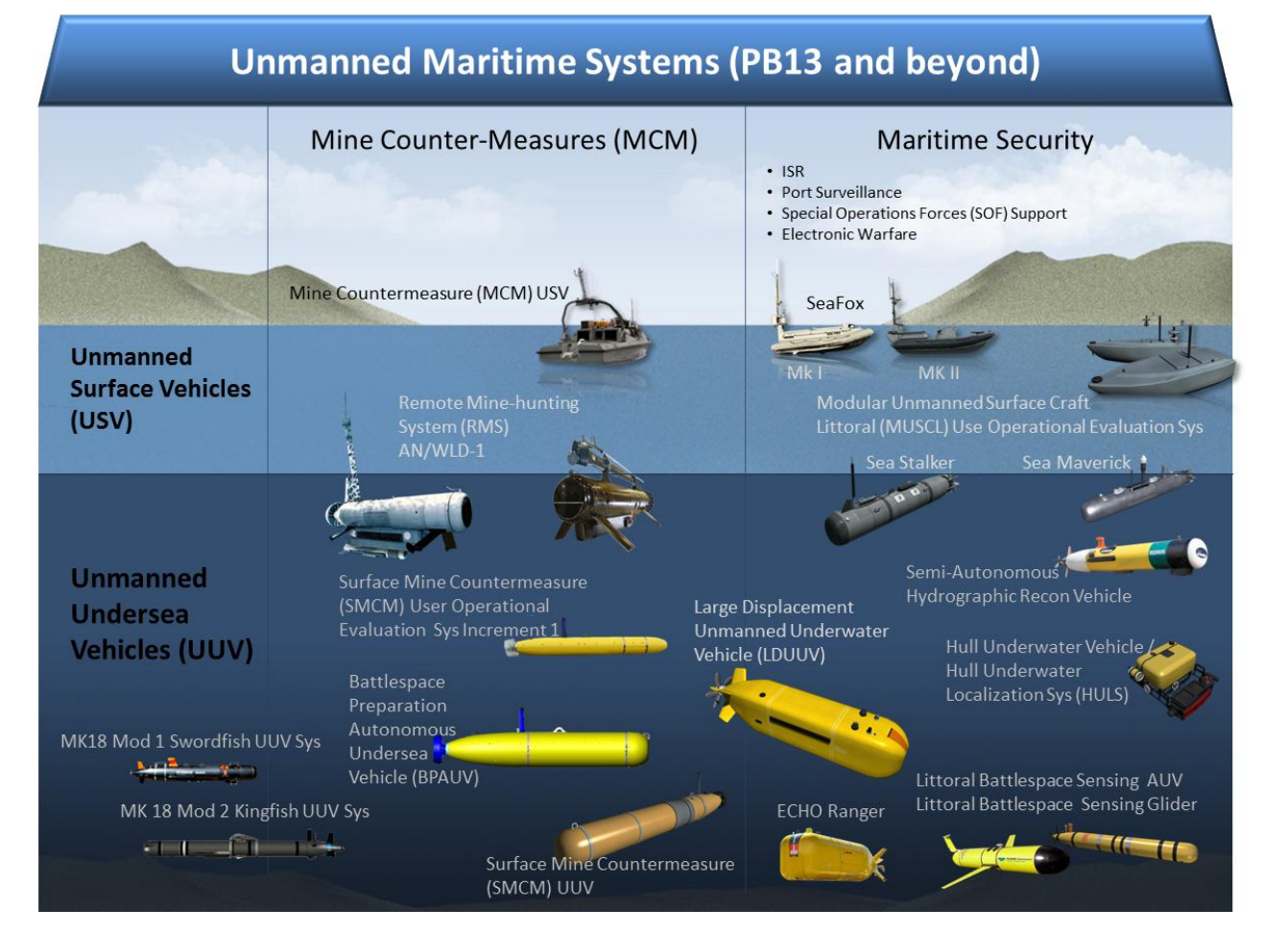
Unmanned Maritime Systems
Chemical, Biological, Radiological and Nuclear (CBRN) Attack
In relation to maritime terrorism, the threat of a CBRN attack would likely consist of the transportation of a device via ship in order to be detonated at a port, or for onward transport to another target such as a heavily populated area. Due to the extreme difficulty in physically searching the quantity of containers that pass through ports, this type of attack is difficult to detect.
In âThe Economic Impact of Nuclear Terrorist Attacks on Freight Transport Systems in an Age of Seaport Vulnerabilityâ , Dr C Clark highlights the following deaths and damages of a nuclear terrorist attack on a major seaport or Washington DC:

These statistics show how significant any attack would be against a major city and therefore makes it an attractive type of attack for terrorists to utilise although highly difficult to conduct. In the US, the annual cost of a solution for effectively screening 100 percent of U.S.-bound containers at ports is estimated to be about $100 Million per major port, or $10 billion for 100 ports.
Liquefied Natural Gas (LNG)
LNG is natural gas (predominantly methane) that has been converted to liquid form for ease of storage or transport. LNG is transported in specially designed ships with double hulls protecting the cargo systems from damage or leaks, which cost around $200 million each. Although LNG tankers have sailed over 100 million miles without a shipboard death or even a major accident, there is the potential threat that perhaps a hijacked vessel could be then used as a floating bomb. LNG tankers could be driven into a vulnerable port or stationary ship in order to have both a lethal and economic impact on the intended target. Terrorists though could utilise any vessel with a dangerous or volatile cargo in order to achieve a significant impact. Where boardings have been attempted against LPG and LNG vessels in recent years, they are usually in the area of strategic maritime choke-points; such as the Bab el Mandeb, east of the Strait of Hormuz and the Malacca Strait. Any terrorist attack therefore, would be likely targeted against countries allied to the West, and within the proximity of where the vessel was hijacked, with likely targets being the Balhaf LNG terminal in the southern Shabwa province, Yemen, which has been targeted by Islamist gunmen in the past. Other likely targets would be Bahraini, Saudi Arabian and Qatari oil and gas facilities.
Suicide Boat Attacks
As shown with the U.S.S. Cole and M/V Limburg, the threat of suicide boat attack is a significant threat to both military and commercial shipping. Any type of vessel could be used, however, speed and deception are required in such an attack, therefore, small boats with powerful engines that resemble common local maritime traffic are the most likely type of vehicle that would be utilised.
In the case of the Basra Oil Terminal attack in Apr 2004, suicide boats were used to initially target a patrol vessel that was about to intercept the attack group. The other boats then targeted the al Basra Oil Terminal, seven miles off the coast of Iraq. Once again, this could have had a significant economic impact on the country.
VULNERABILITIES
Ports â Global economies depend on commercial shipping as it is the most reliable, cost efficient method of transporting goods. As such there are an estimated 4,571 ports in 196 countries around the world. Due to a portâs accessibility by land and sea and their extensive size, they are very difficult to secure, which makes them liable to terrorist attack.
Vetting â There are issues with regard to the lack of vetting and due diligence into the crew of ships, in addition to the ease with which false seafarer certificates and identity documents can be procured. The threat is therefore that terrorists posing as genuine sailors could gain employment aboard ships with the intent of conducting a terrorist attack.
Strategic choke-points and ships in transit â Choke-points are perfect locations for piracy and terrorist attacks due to the natural narrow waterways with large numbers of vessels passing though them. The main global choke-points are the Bosphorus, the Suez Canal, Strait of Hormuz and the Strait of Malacca.
Flags of Convenience â Shipâs use flags of convenience, which are essentially cheap foreign flags that shipâs use to avoid heavy taxes, inconvenient regulations and inspection. Vessels with certain flags of convenience could be used for nefarious purposes due to there being no link between the nationality of the owner and the location of the shipâs registration.
Container Shipping â There are an estimated total of 12 million containers in global circulation, with 72 million moving through the worldâs seaports every year, as such tracking and securing is an extremely difficult task. The 2013 Maersk Triple E Class for example can carry 18,000 twenty-foot equivalent unit containers. Inspecting the full shipment of a large container ship means severe disruption, as such countries operate by conducting targeted searches. In the US the Customs and Border Protection manage to physically search only 2% of all containers entering the country. Threats to this vulnerability include the smuggling of weapons of mass destruction, conventional explosive devices, as well as the transportation of persons and weapons.
At a Mar 2003 hearing on terrorist organizations Rep. Chris Bell of Texas asked administration officials about intelligence reports that indicated al Qaeda could own as many as 15 cargo ships. Officials at the hearing didnât answer the question directly, but media reports linked the group to a network of cargo freighters that could be used either in operations or for group logistics. Although any vessels linked to terrorist groups are likely identified and monitored extensively, this only serves to highlight the potential threat of maritime terrorism.
CONCLUSION
Historical maritime terrorist incidents are minimal in comparison to land-based terrorism, however, the threat is still significant, especially when you consider the effect they could have, both physically and economically. The link between terrorism and piracy is clear, both from a causal stance, their financial objectives, but also the use of similar tactics. When you consider that 80-90% of the global trade moves by sea, any sustained campaign against port infrastructure, the offshore oil and gas industry and shipping in general, could have significant global destabilising implications. The question is whether terrorist groups have the capability and intent to conduct such a campaign, does it meet their strategic aims? When we consider growing global instability and the current terror epidemic, as well as security forces being overstretched with land based terror attacks, it seems likely that maritime terrorism could increase in the future. A campaign that if conducted effectively, could have far greater implications than the current land based terror campaign.
